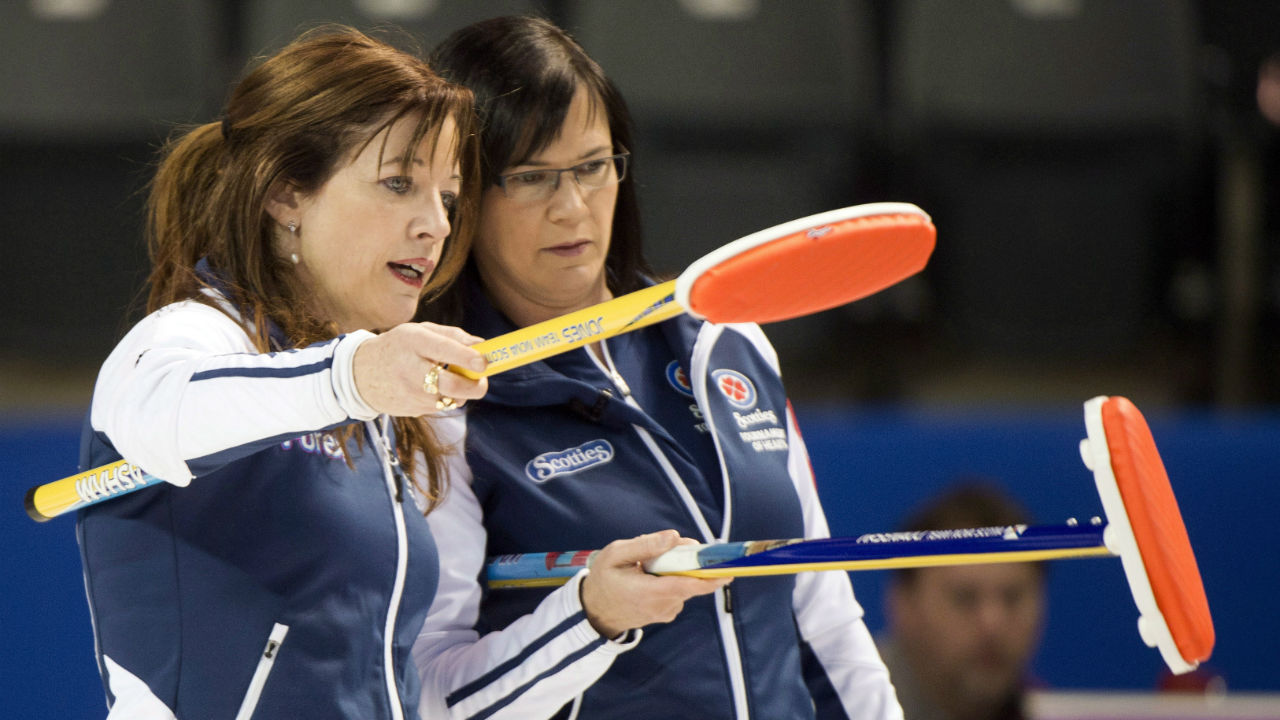Colleen Jones proud to see evolution of women’s curling
Colleen Jones has seen the complete 180-degree turn women’s curling has taken during her career.
Jones experienced the rise first-hand from the days of empty stands at the 1979 Macdonald Lassies Championship in her debut at the Canadian women’s tournament to packed houses during her 21st appearance at the 2013 Scotties Tournament of Hearts. The tour scene has also swelled with the Pinty’s Grand Slam of Curling now holding six events featuring women’s fields on arena ice and airing on national television.
The six-time Canadian champion Jones recalled the dramatic shift while discussing her new memoir Throwing Rocks at Houses, published by Viking Canada with co-author Perry Lefko.
“I’ve watched the entire evolution of the game ever since I started in my first Canadian women’s in 1979 as a second stone and it was pretty dismal, actually, because there were more people on the ice than in the stands,” Jones said. “I saw that part of the women’s game explode when Scott Paper took it over in 1982 and had this vision of growing the game. Now Grand Slam is taking it to this next level where it’s becoming even bigger.”
Coincidentally, Jones was crowned the winner of the Scott Tournament of Hearts in 1982 and the Halifax native was synonymous with women’s curling during her dynasty run from 1999-2004 when her team with third Kim Kelly, second Mary-Anne Arsenault, and lead Nancy Delahunt captured five Canadian titles over the six-year span plus world championships in 2001 and 2004 that helped raise awareness of the game.
Even in the past decade rapid changes have come with the Pinty’s Grand Slam of Curling including a women’s division to their crown jewel event, the Players’ Championship, in 2006. The Pinty’s GSOC has added women’s fields to the other three majors expanding the Masters in 2012 and the Canadian Open a year ago. Women’s curling teams made their National debut earlier this month and two brand new events were also created for 2015-16, the Tour Challenge and Champions Cup.
Men’s skip Brad Gushue also threw in his support for equality on tour.
“It’s obviously a little bit different from the men’s game but really entertaining, very high level and there’s no reason they shouldn’t be here,” Gushue said after winning the National men’s title last week in Oshawa, Ont. “I think it’s good for the game, good for TV — there are more games to watch — and good for events like this too because there are more draws … it’s all positive.”
Jones, who works as a reporter and weather personality for CBC, expressed how fortunate she has been to experience the change.
“When I see the evolution of the game from the 1970s to the early 1980s to the 1990s to the early 2000s to now, I’m so proud of the way it continues to grow and gives women this equal opportunity sport, which is so rare in the world,” Jones said. “Outside of women’s tennis and golf it’s pretty slim pickings.”
“In many ways it’s such a Canadian success story how Canada has embraced this game. TV executives obviously also see it as this fabulous event on television so it’s a wonderful partnership and it’s allowed the game to grow in such a huge way,” she added. “When you remember it, yes it’s big now but the evolution of it for the last three decades as I watch it, it’s with a lot of pride that I can remember when it was so tiny it’s hysterical.”
Gushue, a four-time Grand Slam champion, believes there’s still room to grow for women’s curling on tour.
“I’d like to see all of the Slams with the women’s teams,” he said. “I think it’s probably the direction it’s going to end up going.”
Gushue jokingly said the only drawback is it makes the events longer and keeps him away from home in St. John’s, N.L., longer, but the 2006 Olympic gold medallist added on a serious note, “overall I think it’s a positive thing for the sport.”
